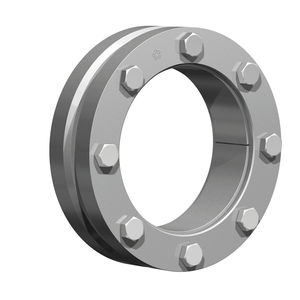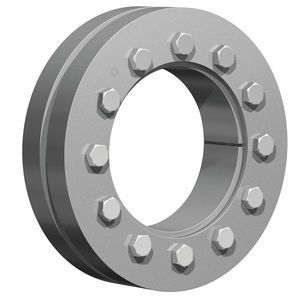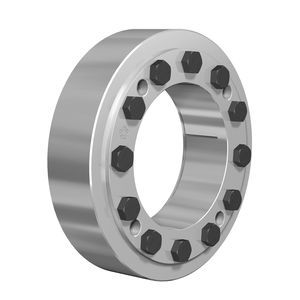
- Power Transmission - Mechanical components
- Mechanical Transmission
- Shrink disc coupling
- RINGFEDER POWER TRANSMISSION GMBH
- Company
- Products
- Catalogs
- News & Trends
- Exhibitions
Shrink disc coupling RfN 4091 discshaftsflange


Add to favorites
Compare this product
Characteristics
- Type
- shrink disc, disc
- Product applications
- shafts
- Installation system
- flange
- Torque
Max.: 1,940,000 Nm
(1,430,870.5696 ft.lb)Min.: 1,800 Nm
(1,327.6119 ft.lb)
Description
Slit inner ring – low losses and pressure on the hub.
Its wider structure with particularly strong outer rings gives the RINGFEDER® RfN 4091 series the highest transfer values – even in applications that involve extremely static or dynamic loads. The preload force can be set targeted to the relevant application.
Product Characteristics
Shrink discs are the modern method for creating a mechanical shrink fit. The shrink disc consists of either one or two thrust rings with tapered bores and a mating tapered inner ring. By tightening locking screws the thrust rings are drawn together compressing the inner ring and applying pressure to the outside of the hub clamping it to the shaft. Being positioned around the hub there is only one interface transmitting the loads giving the shrink disc method distinct advantages such as offering the possibility of very concentric and well balanced connections that are suited to high speed applications. Traditional shrink fits require complicated calculations, close machining tolerances and fine surface finishes, they also need considerable effort with mounting and removal. The shrink disc connection has none of these disadvantages and is better than any of the other usual connection methods with regard to fatigue strength under alternating torsional stress.
Unlimited range of applications – RINGFEDER® Shrink Disc connections are suitable for securing all types of hubs onto shafts and axles. Replacing traditional shrink fits, keys and polygon connections, splined shafts etc.
Catalogs
Other RINGFEDER POWER TRANSMISSION GMBH products
Shrink Discs
Related Searches
- Clamp
- Flexible shaft coupling
- Shafts coupling
- Flange shaft coupling
- Torque shaft coupling
- Rigid shaft coupling
- Backlash-free coupling
- Transmission shaft coupling
- Sleeve shaft coupling
- Workholding component
- Compact coupling
- High load capacity coupling
- Mechanical workholding component
- Disc shaft coupling
- High-torque shaft coupling
- Gear shaft coupling
- Industrial shaft coupling
- Elastomer shaft coupling
- Maintenance-free shaft coupling
- Jaw shaft coupling
*Prices are pre-tax. They exclude delivery charges and customs duties and do not include additional charges for installation or activation options. Prices are indicative only and may vary by country, with changes to the cost of raw materials and exchange rates.








